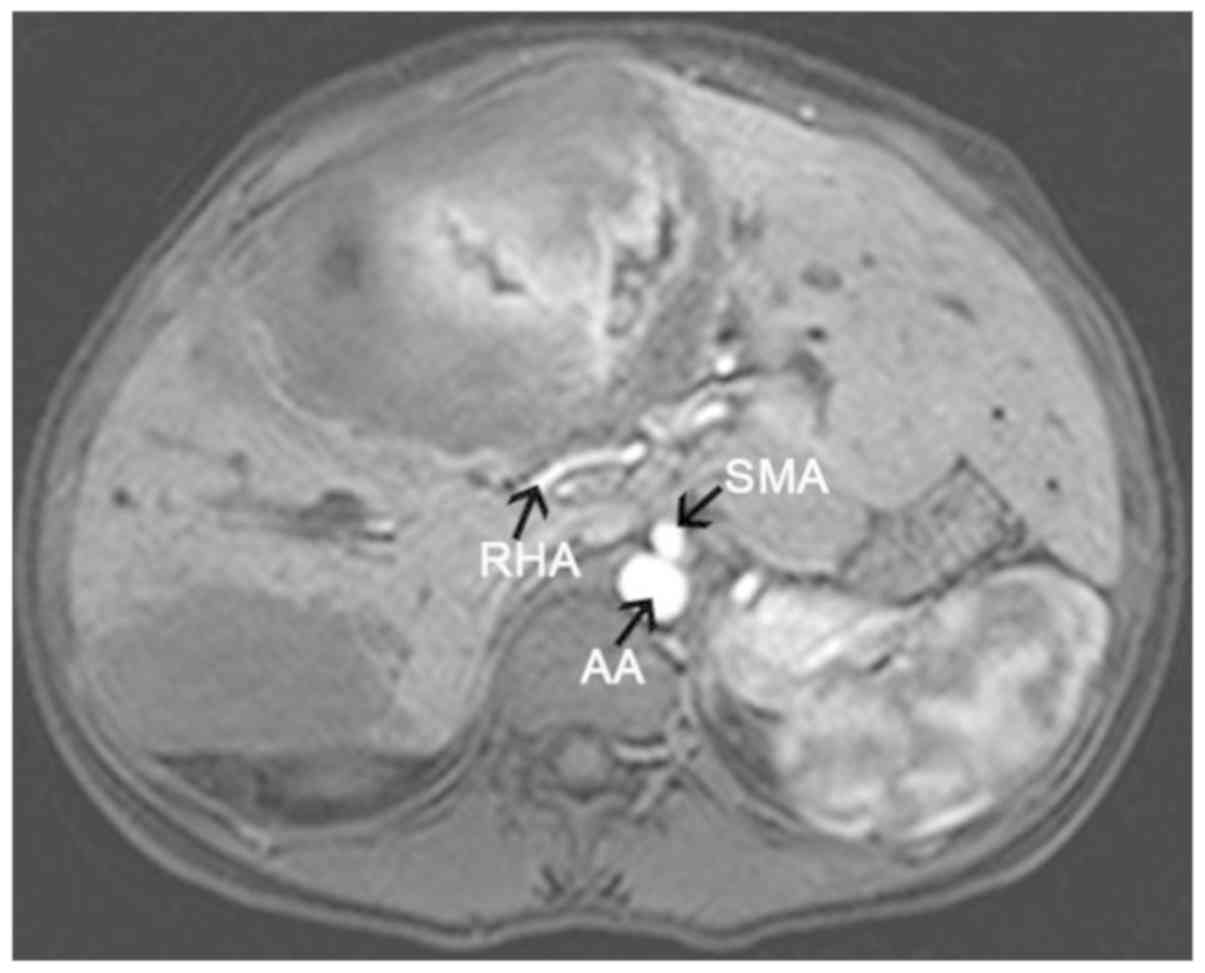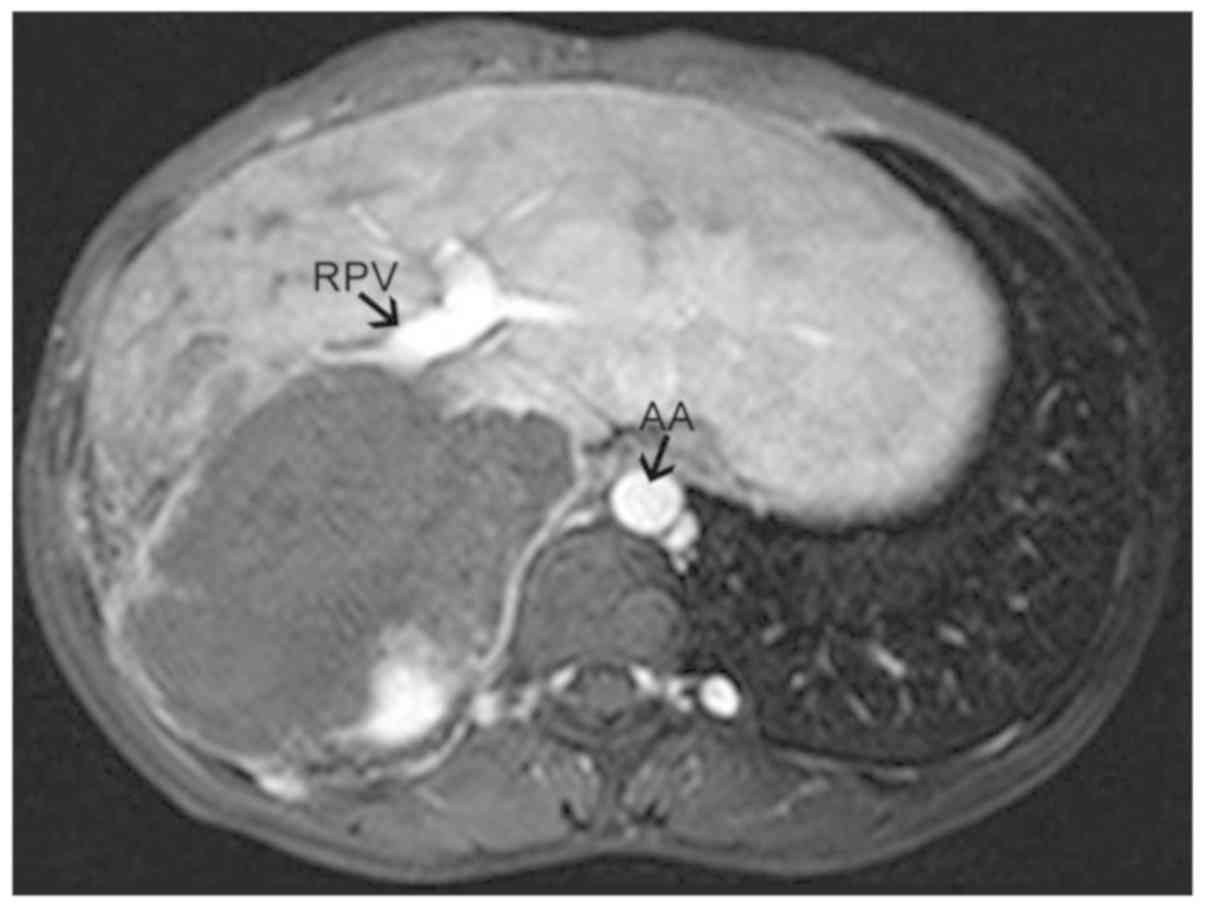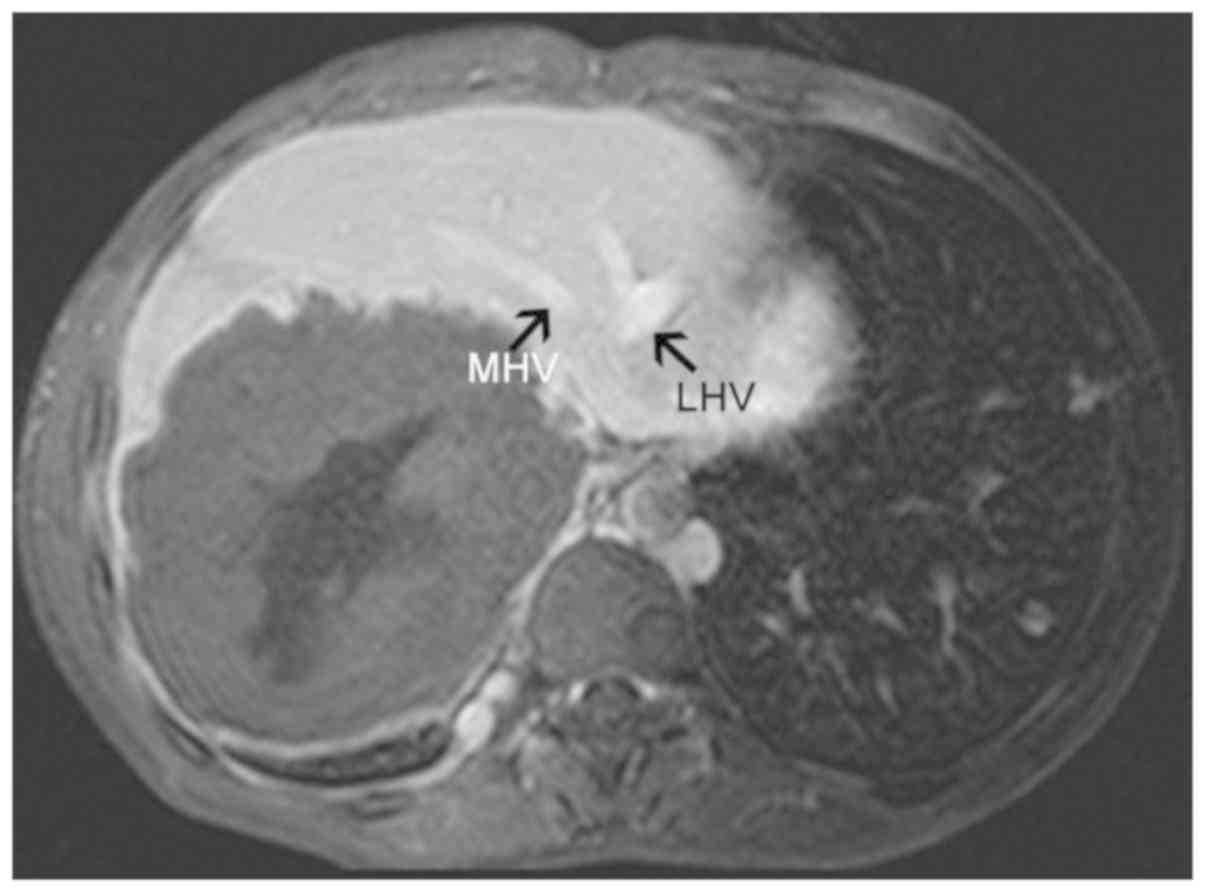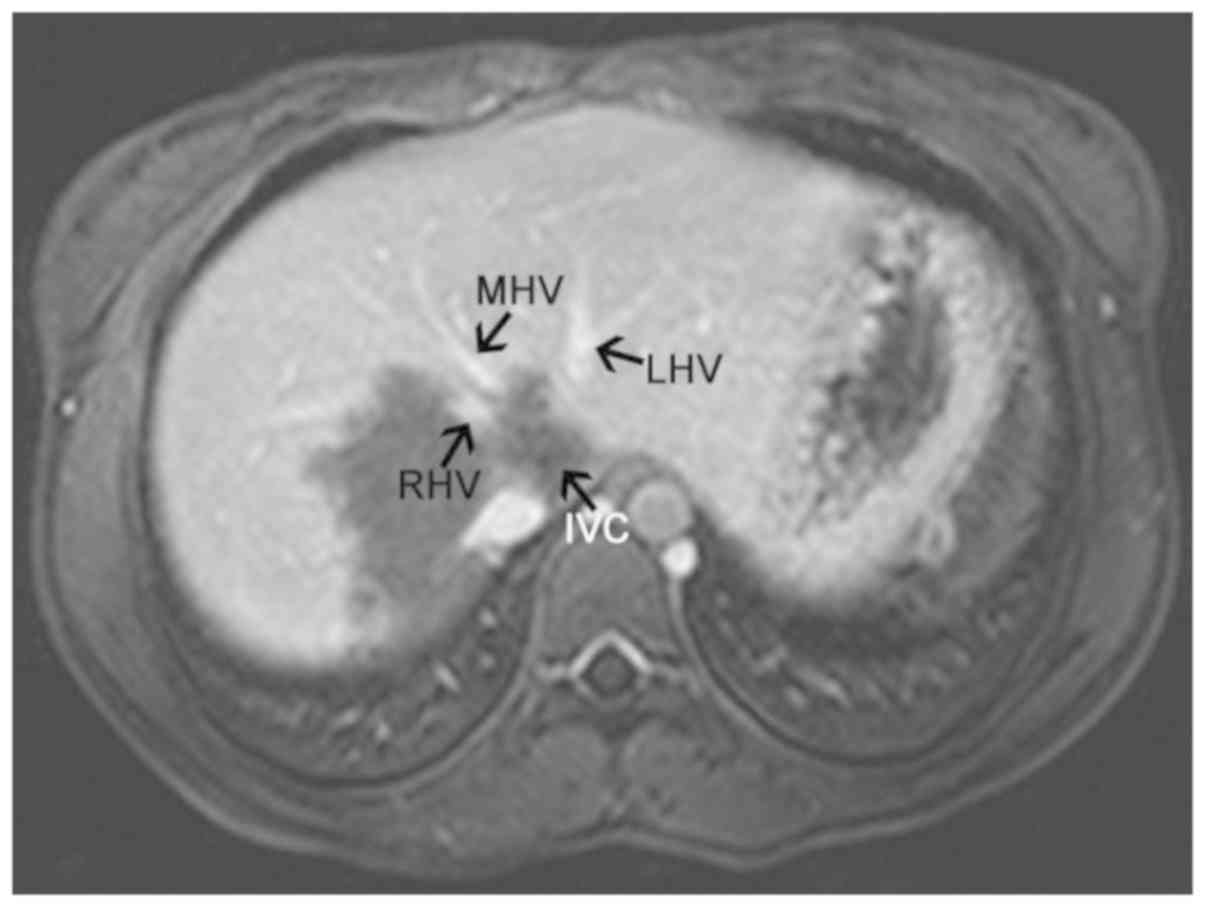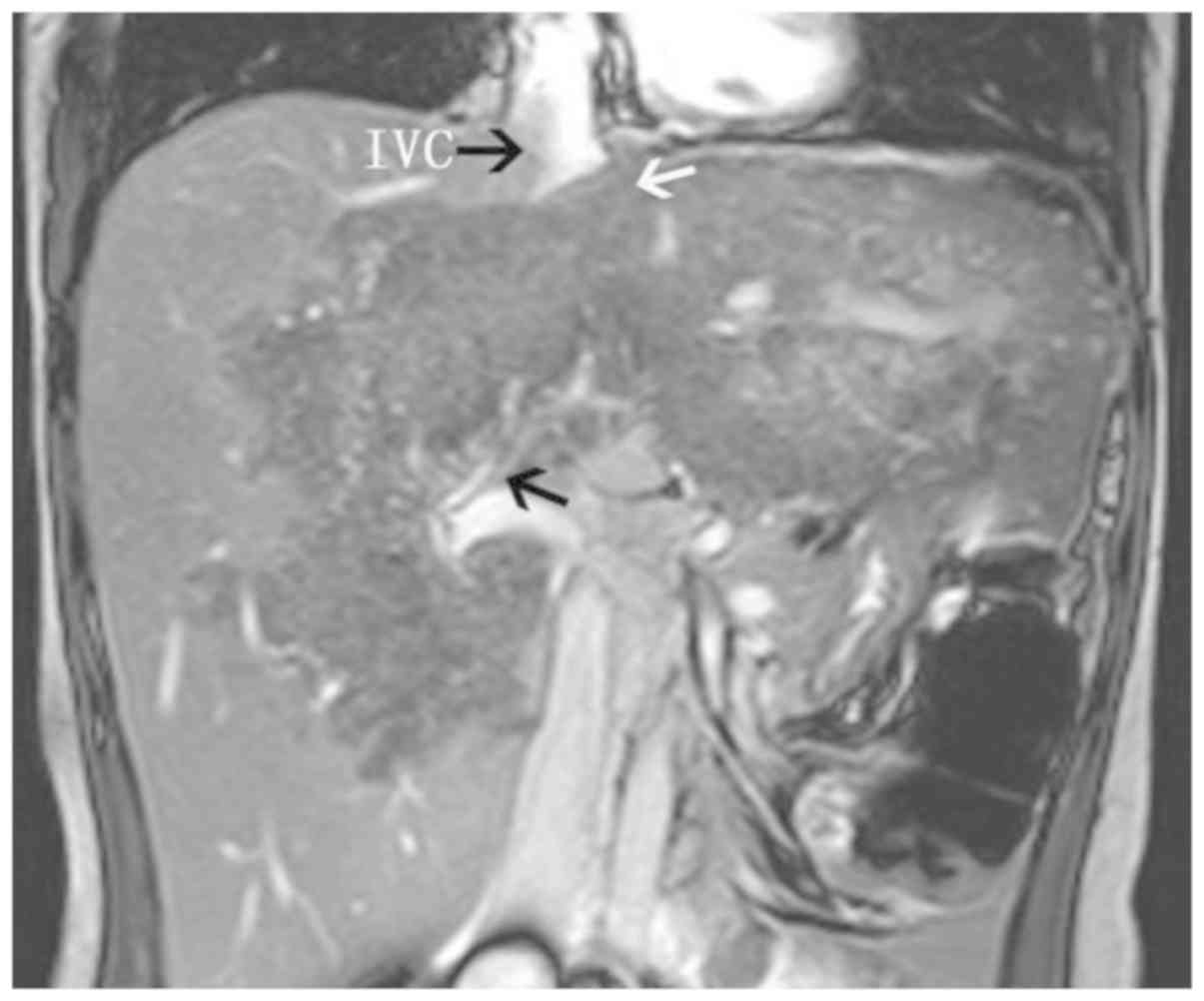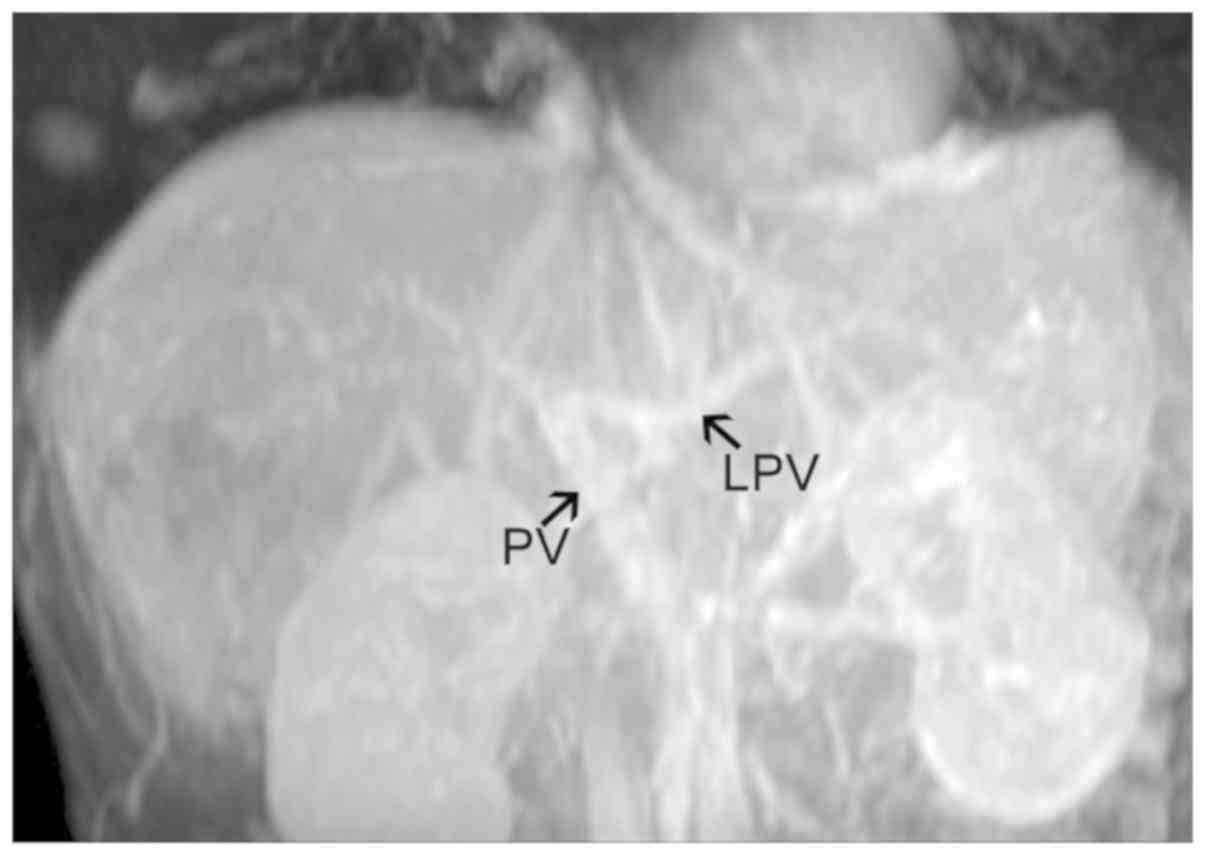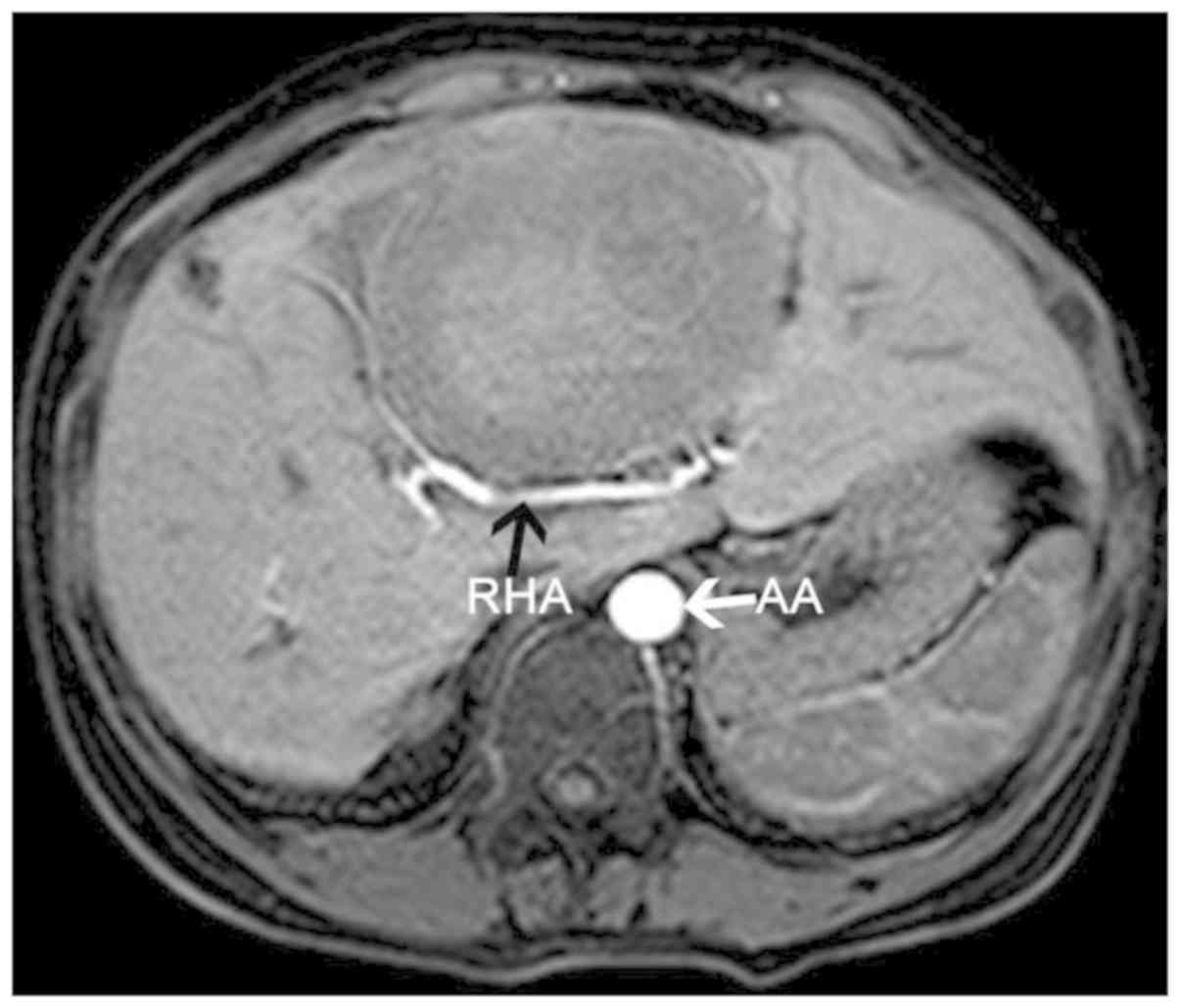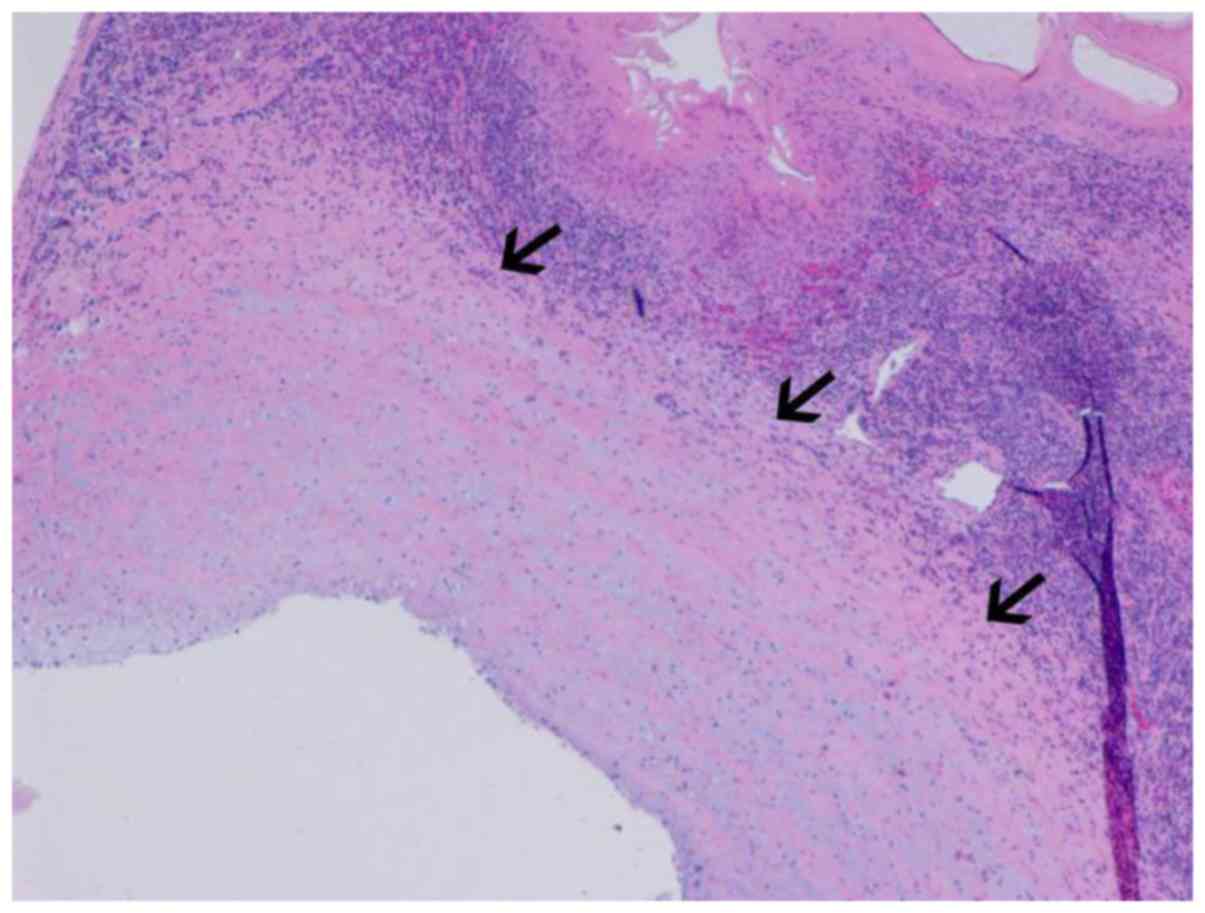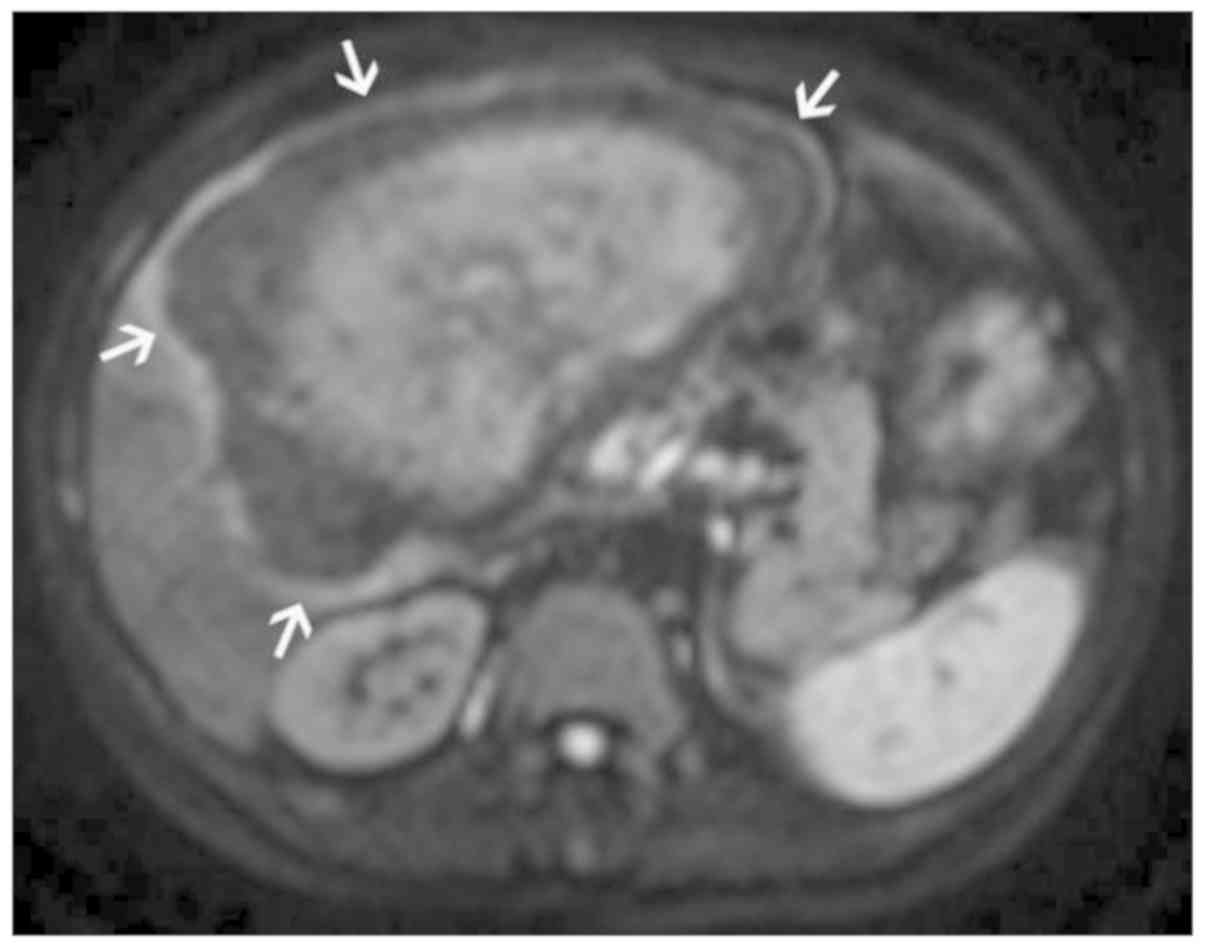|
1
|
Carmena D and Cardona GA: Echinococcosis
in wild carnivorous species: Epidemiology, genotypic diversity, and
implications for veterinary public health. Vet Parasitol.
202:69–94. 2014. View Article : Google Scholar : PubMed/NCBI
|
|
2
|
Farrokh D, Zandi B, Pezeshki Rad M and
Tavakoli M: Hepatic alveolar echinococcosis. Arch Iran Med.
18:199–202. 2015.PubMed/NCBI
|
|
3
|
Ren L, Zhang LQ, Zhou FS, Fan HN, Deng Y,
Wang HJ, Ma J, Wang Z and Luo SDW: Epidemiological investigation on
hepatic hydatid disease in Banma county of Guoluo tibetan
autonomous prefecture of Qinghai province. Chin J Dis Control Prev.
20:1032–1035. 2016.(In Chinese).
|
|
4
|
Mihmanli M, Idiz UO, Kaya C, Demir U,
Bostanci O, Omeroglu S and Bozkurt E: Current status of diagnosis
and treatment of hepatic echinococcosis. World J Hepatol.
28:1169–1181. 2016. View Article : Google Scholar
|
|
5
|
Jiang W, Wang J, Xiao H, Li TT, Liu H and
Liu W: Evaluation of blood supply distribution of hepatic
echinococcosis by dual-source CT energy imaging: correlation
between iodine concentration and histopathology. J Xinjiang Med
Univ. 38:1207–1212. 2015.(In Chinese).
|
|
6
|
Fang D, Chen ZY, Zeng Y, Li B, Wen TF,
Wang WT, Wu H, Xu MQ, Yang JY, Wei YG, et al: Surgical treatment of
hepatic alveolar echinococcosis. Chin J Bases Clin in General Surg.
23:521–525. 2016.(In Chinese).
|
|
7
|
Chen KF, Tang YY, Wang R, Fang D, Chen JH,
Zeng Y, Li B, Wen TF, Wang WT, Wu H, et al: The choose of different
surgical therapies of hepatic alveolar echinococcosis: A
single-center retrospective case-control study. Medicine
(Baltimore). 97:e00332018. View Article : Google Scholar : PubMed/NCBI
|
|
8
|
Zhang SJ, Zhang L, Zhao JQ, Zhang YG, Wu
XW, Peng XY, Cao YW, Yang HQ, Lv HL, Sun H and Chen XP: Inhibition
of invasive growth and metastasis of hepatic alveolar
echinococcosis by anti-osteopontin antibody. Chin J Parasitol
Parasit Dis. 29:410–414. 2011.(In Chinese).
|
|
9
|
He YB, Bai L, Aji T, Jiang Y, Zhao JM,
Zhang JH, Shao YM, Liu WY and Wen H: Application of 3D
reconstruction for surgical treatment of hepatic alveolar
echinococcosis. World J Gastroenterol. 35:10200–10207. 2015.
View Article : Google Scholar
|
|
10
|
Li HL, Hou LC, Ren L, Fan HN, Bao HH, Wen
SB and Li WX: Significance of magnetic resonance imaging in
preoperative evaluation for patients with hepatic alveolar
echinococcosis. Chin J Bases Clin in General Surg. 23:535–538.
2016.(In Chinese).
|
|
11
|
Sanaat Z, Khalili R, Almasi S, Aliparasti
MR, Tavangar SM, Movasaghpoor A, Kazemi F and Davani A: Does
chemotherapy change expression of VEGF A&C and MVD in acute
myeloid leukemia? Int J Hematol Oncol Stem Cell Res. 8:24–29.
2014.PubMed/NCBI
|
|
12
|
Ramnefjell M, Aamelfot C, Helgeland L and
Akslen LA: Vascular invasion is an adverse prognostic factor in
resected non-small-cell lung cancer. APMIS. 125:197–206. 2017.
View Article : Google Scholar : PubMed/NCBI
|
|
13
|
Geramizadeh B, Attaran Y, Malek-Hosseini
SA, Kaviani MJ and Hossieni-Asl K: Photoclinic. Alveolar hydatid
cyst of the liver. Arch Iran Med. 14:211–212. 2011.PubMed/NCBI
|
|
14
|
Piarroux M, Piarroux R, Giorgi R, Knapp J,
Bardonnet K, Sudre B, Watelet J, Dumortier J, Gérard A, Beytout J,
et al: Clinical features and evolution of alveolar echinococcosis
in France from 1982 to 2007: Results of a survey in 387 patients. J
Hepatol. 55:1025–1033. 2011. View Article : Google Scholar : PubMed/NCBI
|
|
15
|
Vuitton DA and Bresson-Hadni S: Alveolar
echinococcosis: Evaluation of therapeutic strategies. J Expert Opin
Orphan Drugs. 2:67–86. 2014. View Article : Google Scholar
|
|
16
|
Nunnari G, Pinzone MR, Gruttadauria S,
Celesia BM, Madeddu G, Malaguarnera G, Pavone P, Cappellani A and
Cacopardo B: Hepatic echinococcosis: Clinical and therapeutic
aspects. World J Gastroenterol. 18:1448–1458. 2012. View Article : Google Scholar : PubMed/NCBI
|
|
17
|
Wen H, Dong JH, Zhang JH, Zhao JM, Shao
YM, Liang YR and Ji XW: Ex-vivo liver resection combined liver
autotransplantation for the treatment of hepatic alveolar
echinococcosis. Chin J Dig Surg. 10:148–149. 2011.
|
|
18
|
Qian NS, Liao YH, Cai SW, Rautd V and Dong
JH: Comprehensive application of modern technologies in precise
liver resection. Hepatobiliary Pancreat Dis Int. 12:244–250. 2013.
View Article : Google Scholar : PubMed/NCBI
|
|
19
|
Thian YL, Riddell AM and Koh DM:
Liver-specific agents for contrast-enhanced MRI: Role in
oncological imaging. Cancer Imaging. 13:567–579. 2013. View Article : Google Scholar : PubMed/NCBI
|
|
20
|
Sun YQ, Zhang YH, Yang M, Wang JJ and
Zhang QX: Application of CT and MRI in Ex-vivo autologous liver
transplantation of advanced hepatic alveolar echinococcosis. Chin J
Med Imaging. 23:610–613. 2015.(In Chinese).
|
|
21
|
Wang J, Huang Y, Zhao YP, Liu WY, Wang J
and Liu XL: Preoperative multi-slice spiral CT evaluation of
involvement of vessels and biliary ducts in hepatic cystic
echinococcosis. Chin J Radiol. 44:397–400. 2010.
|
|
22
|
Wu JW, Qu XL, Gao H, Lv MG, Lu L and Wang
Xuan: Application of LAVA CE-MRA in hepatectomy for huge hepatic
tumor. Chin J Prac Surg. 33:960–963. 2013.
|
|
23
|
Goceri E: Automatic labeling of portal and
hepatic veins from MR images prior to liver transplantation. Int J
Comput Assist Radiol Surg. 11:2153–2161. 2016. View Article : Google Scholar : PubMed/NCBI
|
|
24
|
Li Q, Lai SL, Zhang W, Jin GQ, Wang C, Su
DK and Xie D: Radiologic hepatic capsular invasion on msct in
prediction of microvascular invasion of hepatocellular carcinoma. J
Clin Radiol. 6:838–840. 2017.
|
|
25
|
Conraths FJ, Probst C, Possenti A, Boufana
B, Saulle R, La Torre G, Busani L and Casulli A: Potential risk
factors associated with human alveolar echinococcosis: Systematic
review and meta-analysis. PLoS Negl Trop Dis. 11:e00058012017.
View Article : Google Scholar : PubMed/NCBI
|
|
26
|
Baheti AD, Dunham GM, Ingraham CR, Moshiri
M, Lall C, Park JO, Li D, Katz DS, Madoff DC and Bhargava P:
Clinical implications for imaging of vascular invasion in
hepatocellular carcinoma. Abdom Radiol (NY). 41:1800–1810. 2016.
View Article : Google Scholar : PubMed/NCBI
|
|
27
|
Fan YX, Ren WX, Bawudun D, Ji WZ, Gu JP,
Xu XD and Zhang HX: Digital subtraction angiographic observation on
blood supply of rat's hepatic alveolar echinococcosis. Chin J
Interv Imaging Ther. 9:37–40. 2012.
|
|
28
|
Ren WX and Xiao XS: The blood supply of
portal vein in experimentalhepatic alveolar echinococcosis. Chin J
Interv Imaging Ther. 4:142–147. 2007.
|



